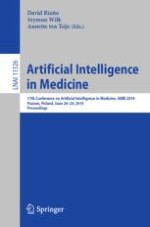2019 | OriginalPaper | Chapter
Time-to-Birth Prediction Models and the Influence of Expert Opinions
Authors : Gilles Vandewiele, Isabelle Dehaene, Olivier Janssens, Femke Ongenae, Femke De Backere, Filip De Turck, Kristien Roelens, Sofie Van Hoecke, Thomas Demeester
Published in: Artificial Intelligence in Medicine
Publisher: Springer International Publishing
Activate our intelligent search to find suitable subject content or patents.
Select sections of text to find matching patents with Artificial Intelligence. powered by
Select sections of text to find additional relevant content using AI-assisted search. powered by
